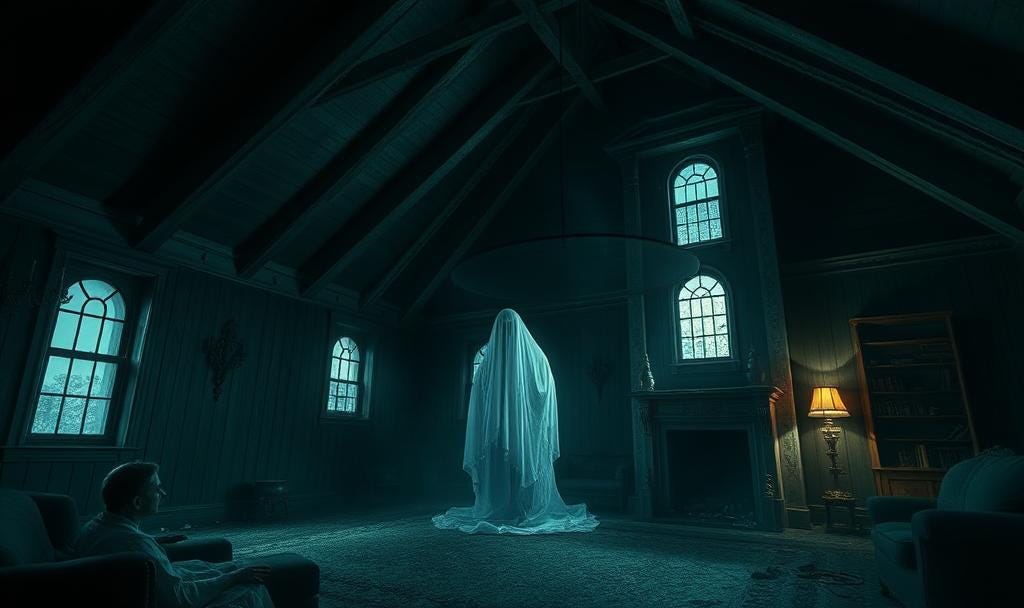Madness and Mirrors: Antoinette Cosway as Jane Eyre’s Gothic Double
in Jean Rhys' Wide Sargasso Sea
What happens when you let the so-called “madwoman in the attic” speak for herself? In Wide Sargasso Sea, Jean Rhys creates an unforgettable response to Charlotte Brontë’s canonical Jane Eyre (one of my favourite novels!), one that rewrites the colonial margins of the Victorian classic and reimagines its silences through the language of the Gothic.
In Jane Eyre, Bertha Mason is many things: the mysterious wife locked away in the attic, the terrifying presence behind the tapestry, the shadowy force threatening to ruin Jane’s happy ending. But, she is never fully a person. She is spectacle, symbol, obstacle, a ghost; in other words, a woman seen only through the eyes of others.
Writing over a century later, Jean Rhys refuses to let this erasure stand. In Wide Sargasso Sea (1966), she imagines Bertha’s story from the beginning. She gives her a name—Antoinette Cosway—a voice, a childhood, and a world shaped not by moors and morals, but by the fierce, complicated landscape of post-emancipation Jamaica. The result is not just a prequel. It is a literary act of resistance: Rhys transforms Brontë’s madwoman into a tragically lucid figure whose descent into silence and madness becomes both a personal unraveling and a scathing indictment of colonial and patriarchal power.
Post-colonialism and the Gothic in Wide Sargasso Sea
One of the most compelling aspects of Wide Sargasso Sea, in my opinion, is the way Rhys reimagines Gothic conventions through a post-colonial lens. The novel does not just borrow the eerie atmosphere, decaying houses, or unstable identities we expect from Gothic fiction, but transforms them to expose the deep psychological scars of Empire and the disorientation of life in a post-emancipation Caribbean.
In addition to being symbolic, the haunted landscapes of Wide Sargasso Sea are historical. The crumbling Coulibri Estate, the uneasy silences between former enslavers and the newly freed, the violent undercurrents running beneath the tropical heat: all of these evoke a Gothic mood, but with a distinctly post-colonial twist. Instead of European castles, we get ruined plantation houses. Instead of family curses, we get the unspoken consequences of slavery, racial hierarchies, and cultural loss.
Rhys sets her story in the Caribbean in the years after the abolition of slavery, at a moment when old colonial structures are beginning to collapse but not fast enough to offer clarity or justice. It’s a world where identity is profoundly unstable, and no one feels at home. Antoinette herself embodies this instability: she is Creole, neither fully white nor black, rejected by the black Jamaican community and never fully accepted by the white English colonizers. Her sense of self is fragile from the start, and the Gothic language of doubling, madness, and confinement becomes a way to convey that fragmentation.
The Decaying House
In Gothic fiction, the house is never just a house. It is a repository of secrets, a site of memory and repression, a physical space that mirrors internal psychological states. Wide Sargasso Sea transforms the house into a charged symbol that carries both Gothic weight and post-colonial resonance.

Coulibri Estate, Antoinette’s childhood home, is described with the lush, decaying beauty of a Gothic ruin. Surrounded by overgrown gardens, cut off from the world, and lingering in the wake of economic and social upheaval, it stands as a powerful symbol of colonial decline.
"Our garden was large and beautiful as that garden in the Bible—the tree of life grew there. But it had gone wild. The paths were overgrown and a smell of dead flowers mixed with the fresh living smell. Underneath the tree ferns, tall as forest tree ferns, the light was green. Orchids flourished out of reach or for some reason not to be touched. One was snaky looking, another like an octopus with long thin brown tentacles bare of leaves hanging from a twisted root."
(Part 1, Wide Sargasso Sea)
Look at how the garden is described in the passage above. Once beautiful, the garden has grown wild and menacing, mixing life and death, and creating a sense of isolation. Nature is uncontrollable; when Rhys compares plants to snakes and long-tentacled octopuses (what a fascinating image, right?), it is unsettling, uncanny, and gives the reader a sense of foreboding.
Later, in Thornfield Hall, the house becomes a fortress of control. There, Antoinette is not merely ignored but made a prisoner. The Victorian home becomes the Empire’s final tool: a space of silencing, where Antoinette is reduced to a ghost, a shadow of herself.
Rhys’s own biography adds even more texture to these spaces. Born in 1890 in Dominica, a former British colony in the Caribbean, Rhys was a white Creole woman of Welsh and Scottish ancestry. Like Antoinette, she lived in a world marked by cultural dislocation, racial ambiguity, and uneasy privilege. When she moved to England as a teenager, she experienced alienation and a deepening sense of exile. Her writing would always circle these themes of belonging, displacement, and fractured identity.
Jean Rhys, photographed in 1974. [Bridgeman Images]
Challenging Single Narratives
Before I finish, I think it is important to emphasise that Wide Sargasso Sea is not an attack on Jane Eyre. It is not a takedown, a parody, or a dismissal. Rather, it is a response, a powerful and necessary act of literary re-visioning. In giving Antoinette Cosway a voice, Jean Rhys does not silence Jane’s; instead, she reminds us that no story—however beloved, however canonical—exists in a vacuum. There is no single lens through which truth can be seen.
This is particularly important when the original narrative speaks from a position of cultural power. Jane Eyre offers the world through Jane’s eyes, but her eyes cannot fully see Bertha. That absence is where Jean Rhys writes her novel: in the gaps, the silences, the locked doors.
To read Wide Sargasso Sea alongside Jane Eyre is to hold two mirrors up to one another. In one, we see the Victorian heroine who claims her autonomy and moral clarity. In the other, we glimpse the woman hidden behind the curtain. It is an invitation to read deeper, and never settle for a single story.
Would you like to read, study and discuss Wide Sargasso Sea with Books & Culture? It is the May/June book in the year-long program Read the Classics in 2025. Click on the button below to know more and register:







This was an exquisite review, and I am immediately adding this to the top of my list.
Wide Sargasso Sea is one of my lifetime favorites. Thank you for this insightful essay that gives this work its due.